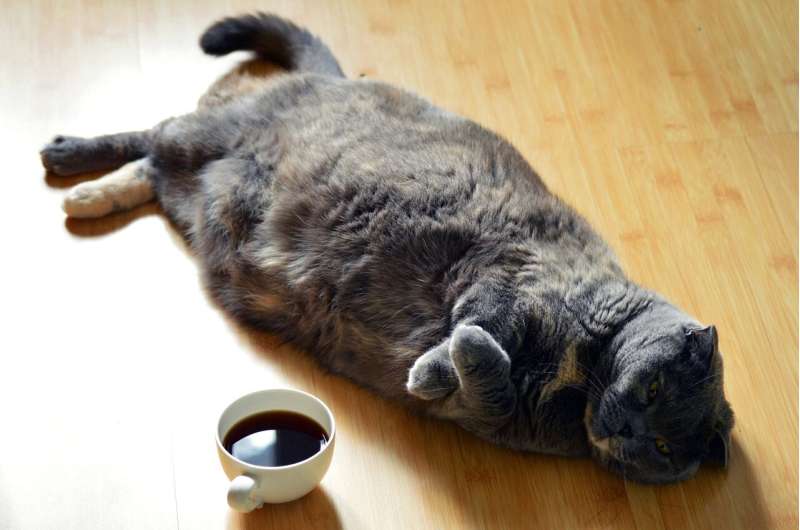Credit: Pixabay/CC0 Public Domain
This isn’t a repeat of last week’s roundup; another team of astronomers has found a second intermediate-mass black hole in the Milky Way, and I can’t help but point it out. They’re amazing! They may have formed in the early universe, comprise the seeds of supermassive black holes, and may have formed from the accretion of multiple stars into a cluster rather than stellar collapse.
If there is a third one next week, I will be irresistibly compelled to tell you. If there is a fourth one after that, I promise to put it in a footnote. Aside from that, scientists have watched monkeys grimace at each other, and a group of researchers have studied cat poop, an abundant resource, to draw conclusions about human metabolism.
A medium-sized thing, scientists say
Last week we reported the first discovery of an intermediate-sized black hole right here in the Milky Way, and this week astronomers at the University of Cologne reported a second black hole in the immediate vicinity of Sagittarius A*, the supermassive black hole at the center of the galaxy. The researchers were studying a star cluster called IRS 13.
Located 0.1 light-years from the galaxy’s core (which is another way of saying “in” the galaxy’s core), the cluster shows such a surprisingly ordered pattern of motion among its stars and such an unexpected density that researchers could only draw two conclusions: either IRS 13 is interacting with Sagittarius A* in some way, or a gravitational object at the cluster’s center is influencing the motions of its stars and maintaining the cluster’s compactness. Multi-wavelength observations of the cluster using the Very Large Telescope, ALMA, and the Chandra X-ray Observatory support the existence of an intermediate-class black hole in IRS 13.
Cats per kilo
House cats are a lot like people: They live in a climate-controlled indoor environment, lounge on furniture, and generally have easy access to prepared food. So scientists have come to believe that they are a great disease model for human diseases. In a new study, researchers at Ohio State University analyzed feline gut microbes to investigate the origins of obesity.
Jenessa Winston, associate professor of veterinary clinical sciences at Ohio State University, says, “Animals share our beds. They share our ice cream. There are all these things that people do with their pets that point to them as a natural disease model with similar environmental exposures to humans.”
The researchers fed seven obese cats a four-phase diet: For the first two weeks, the cats ate commercial cat food free-fed; for one week, they were free-fed a weight-loss formula; then they were switched to a low-calorie weight-loss diet for 11 weeks; and finally, they returned to their original maintenance diet. By analyzing fecal samples, the researchers were able to track changes in metabolites produced by the cats’ gut bacteria, which are associated with metabolic factors throughout the body, including hormonal signals related to inflammation and insulin resistance.
An abundance of a short-chain fatty acid, propionic acid, is increased during weight loss. “When cats are on the special formulated weight loss diet, propionic acid goes up and stays up, and then goes back down when they’re put back on the maintenance diet. So it’s really a dietary change,” Winston says.
Expressive monkeys are popular, study finds
Social animals tend to have a lot of facial musculature. For example, scientists theorize that the development of complex orbital muscles in dogs during domestication helped them communicate better with humans (who have quite a lot of facial muscle complexity, the Schwarzeneggers of facial muscle mass, symmetry, and conditioning). Facial expressions convey information and context and are an important channel of communication.
Now, researchers at Nottingham Trent University studying rhesus macaques report that monkeys with high facial expressiveness have strong social bonds and are more socially successful. Their study included nine social groups of macaques with similar compositions: an adult male, multiple adult females, and offspring. They developed a coding system to track 17 facial muscle movements, focusing on the dominant males in each group. They also quantified the social networks of all 66 monkeys in the study, including time spent between specific pairs and grooming interactions between group members.
Males who displayed a high diversity of facial expressions had stronger social bonds and were likely to be central nodes in their social networks. “Facial-expressive individuals may be better equipped to build and maintain strong social connections, potentially leading to the range of benefits associated with group cohesion, such as increased access to resources, mating opportunities and protection from threats,” says lead author Dr Jamie Whitehouse.
© 2024 Scientific Network X
Citation: Saturday Quotes: Scientists Study Monkey Faces and Cats’ Belly; Another Intermediate Black Hole in the Milky Way (2024, July 20) retrieved July 20, 2024 from https://phys.org/news/2024-07-saturday-citations-scientists-monkey-cat.html
This document is subject to copyright. Except for any fair use for private study or research, no part may be reproduced without written permission. The content is provided for informational purposes only.
#Saturday #Quotes #Scientists #Study #Monkey #Faces #Cats #Belly #Intermediate #Black #Hole #Milky
Image Source : phys.org
